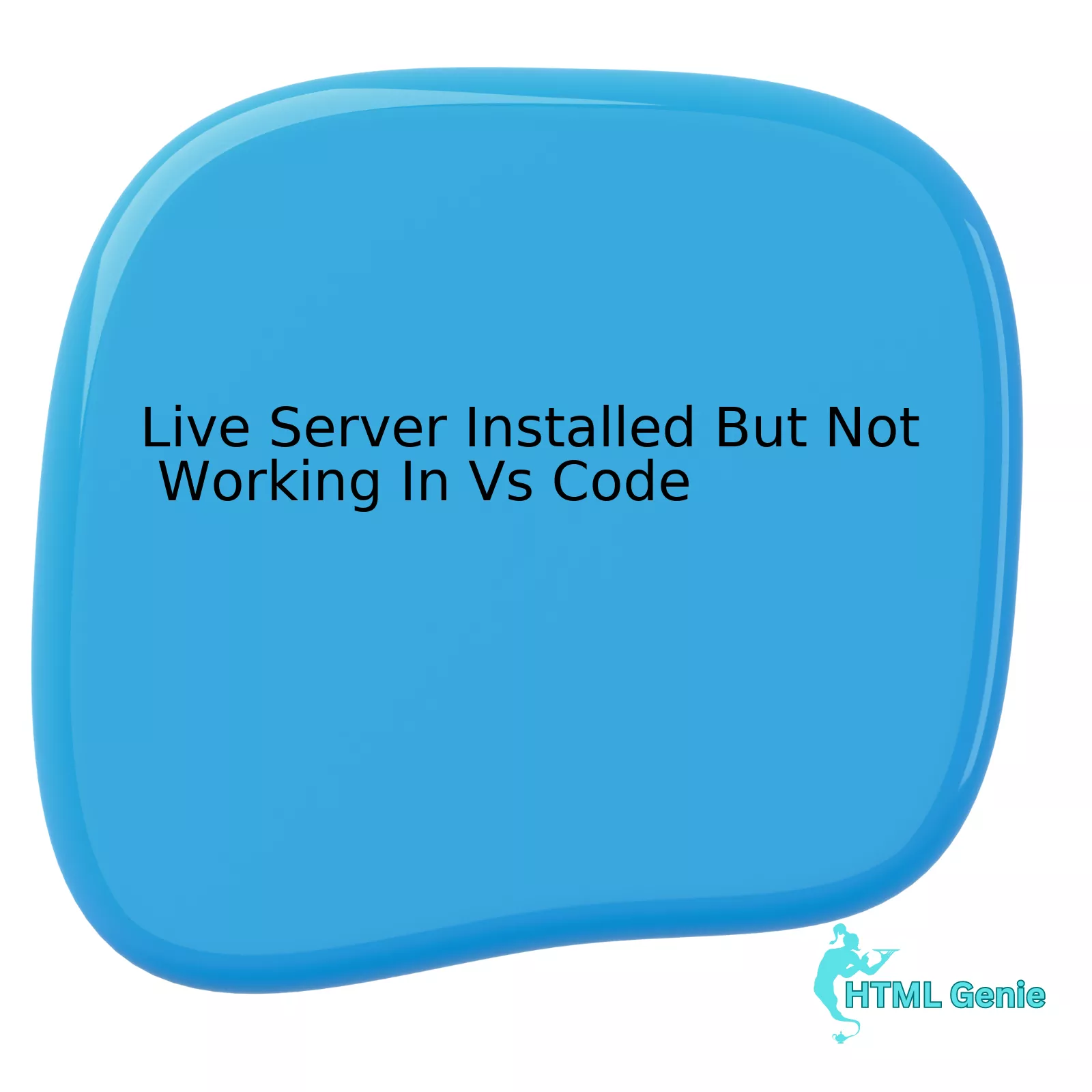In the ever-evolving landscape of frontend development, creating visually stunning and functionally robust websites is only half the battle. The other, arguably more important, half is ensuring that these digital experiences are accessible to everyone, including individuals who rely on assistive technologies. This is where the W3C’s Web Accessibility Initiative (WAI) and its Accessible Rich Internet Applications (ARIA) suite become indispensable tools in a developer’s arsenal. Among these tools, the aria-label attribute is one of the most powerful, yet frequently misunderstood, features for enhancing web accessibility.
This comprehensive HTML tutorial will demystify ARIA labels, providing a deep dive into their purpose, proper implementation, and common pitfalls. We will explore how to use them effectively to bridge the gap between visual UI design and the experience of screen reader users, ensuring your web applications are not just usable, but truly inclusive. From simple icon buttons to complex HTML forms, understanding aria-label is a critical step towards mastering modern web standards and responsible web development.
What Are ARIA Labels and Why Do They Matter?
Before we can use aria-label correctly, we must first understand its place within the broader context of ARIA and the accessibility tree. This foundational knowledge is key to moving beyond simple implementation and towards a more intuitive understanding of web accessibility principles.
Understanding the Accessibility Tree
When a browser loads a webpage, it creates the Document Object Model (DOM), which represents the page’s structure. Simultaneously, it generates a parallel structure called the accessibility tree. This tree is a simplified version of the DOM, containing only the information relevant to assistive technologies like screen readers. It includes an object for each interactive HTML element, conveying its role (e.g., button, link), name, state (e.g., checked, expanded), and value.
The “accessible name” is the most critical piece of information. It’s what a screen reader announces to a user to identify an element. Browsers have a specific order of precedence for determining this name. For an <input>, it might look for an associated <label> element first. This is where ARIA comes in.
The Role of aria-label
The aria-label attribute is an HTML attribute that provides a string value to be used as the accessible name for an element. Its primary purpose is to define a label for an element when there is no visible text label on the screen. When a screen reader encounters an element with an aria-label, it will prioritize this label, often ignoring other text content within the element.
This makes it an essential tool for modern UI design, which often favors minimalism and relies on iconography. A magnifying glass icon for a search button is visually intuitive for many users, but without an accessible name, it’s a complete mystery to a screen reader user. Adding aria-label="Search" solves this problem instantly, providing a clear and concise name in the accessibility tree.
Key Distinctions: aria-label vs. Other Attributes
It’s crucial to distinguish aria-label from similar attributes to avoid common mistakes:
<label>Element: The gold standard for labeling HTML forms. It programmatically links a visible text label to a form control (<input>,<textarea>,<select>). This is always the preferred method when a visible label is present.aria-labelledby: This attribute is used when the text for a label already exists somewhere else in the DOM. You provide it with the ID of one or more elements, and it stitches their content together to form the accessible name. This is useful for complex components where the label is constructed from multiple sources.titleAttribute: While thetitleattribute can sometimes provide an accessible name as a last resort, its behavior is inconsistent across browsers and screen readers. It’s primarily intended to provide supplementary, non-essential information as a tooltip on hover. It should not be relied upon for primary accessibility labeling.
Practical Applications: When and How to Use aria-label
The golden rule of ARIA is: “No ARIA is better than bad ARIA.” This means using these attributes thoughtfully and only when necessary. Here are the most common and appropriate scenarios for using aria-label, complete with code examples.
Scenario 1: Icon-Only Buttons
This is the quintessential use case for aria-label. Buttons that use an SVG, an icon font, or a Unicode character for their visual representation have no text content for a screen reader to announce.
Example: A “Close” button in a modal window.

<!-- Bad Practice: No accessible name -->
<button class="modal-close">×</button>
<!-- Good Practice: Clear accessible name -->
<button class="modal-close" aria-label="Close modal">×</button>
<!-- Also Good Practice: Using an SVG icon -->
<button class="menu-toggle" aria-label="Open navigation menu">
<svg>...</svg>
</button>Without the aria-label, a screen reader might announce “times” or simply “button,” leaving the user confused. With the label, it clearly announces “Close modal, button.”
Scenario 2: Form Controls Without Visible Labels
Modern web design, especially in mobile-first design, sometimes omits visible labels for form inputs to save space, relying on placeholder text or adjacent icons. While a visible <label> is almost always better for UX design and accessibility, aria-label can provide the necessary accessible name if one is truly absent.
Example: A search bar with only a placeholder and a submit icon.
<form action="/search" role="search">
<input type="search" placeholder="Search products..." aria-label="Product search">
<button type="submit" aria-label="Submit search">
<!-- Magnifying glass SVG -->
<svg>...</svg>
</button>
</form>Here, the aria-label ensures the input is identified as “Product search” even if the placeholder text is not treated as a label by some assistive tech (placeholder is not a reliable substitute for a label).
Scenario 3: Clarifying Ambiguous Link Text
Links with generic text like “Read More,” “Click Here,” or “Learn More” can be frustrating for screen reader users who often navigate by listing all the links on a page. An aria-label can provide more context without cluttering the visual layout.
Example: A blog post excerpt in a CSS Grid layout.
<article>
<h3>Exploring Modern CSS with Flexbox and Grid</h3>
<p>A deep dive into the power of modern CSS layout modules...</p>
<a href="/css-layouts" aria-label="Read more about Exploring Modern CSS">Read More</a>
</article>A sighted user sees “Read More” in the context of the article title. The aria-label provides that same context to a screen reader user, who will hear, “Link, Read more about Exploring Modern CSS.”
Common Pitfalls: When to AVOID aria-label
Using aria-label incorrectly can cause more harm than good, creating a confusing or misleading experience for users of assistive technology. Understanding the precedence of accessible name calculation is key to avoiding these common mistakes.
The Cardinal Sin: Overriding Visible Labels
This is the most critical pitfall to avoid. The aria-label attribute overrides all other text content within an element. If an element has visible text, using an aria-label will create a mismatch between what sighted users see and what screen reader users hear. This violates the W3C principle that the accessible name should match the visible label.
Example: An incorrectly labeled form field.
<!-- AWFUL PRACTICE: This is a common mistake! -->
<label for="user-email">Email Address</label>
<input type="email" id="user-email" aria-label="Email Address">In this case, the aria-label is completely redundant. The semantic <label> element already provides the accessible name “Email Address.” While it might not cause direct harm here, it’s unnecessary code. A more dangerous version is:

<!-- DANGEROUS PRACTICE: Mismatch between visible and accessible name -->
<button>Save Changes</button>
<!-- A developer later adds an aria-label thinking it helps -->
<button aria-label="Submit form">Save Changes</button>A screen reader will announce “Submit form, button,” while a sighted user clearly sees “Save Changes.” This is confusing and breaks user trust. If an element has visible, descriptive text, do not use aria-label.
Choosing the Right Tool: aria-label vs. aria-labelledby
Developers often reach for aria-label when aria-labelledby would be a better, more maintainable choice. Use aria-label for a simple, static string. Use aria-labelledby to programmatically associate an element with other text that is already visible on the page.
Example: Labeling a modal dialog with its visible title.
<div role="dialog" aria-labelledby="dialog-title">
<h2 id="dialog-title">Session Timeout Warning</h2>
<p>Your session is about to expire. Would you like to stay signed in?</p>
<!-- ... buttons ... -->
</div>Using aria-labelledby="dialog-title" is superior to aria-label="Session Timeout Warning" because:
- It’s DRY (Don’t Repeat Yourself). The label text is maintained in only one place.
- If the title text changes, the accessible name updates automatically.
- It ensures the visible and accessible names are always synchronized.
Best Practices and Final Recommendations
To effectively integrate ARIA labels into your frontend development workflow, follow these best practices and recommendations. This will help you leverage their power while avoiding common accessibility issues.
1. Prioritize Semantic HTML
Always start with native, semantic HTML elements. A <button>, a <nav>, or an <input> with its corresponding <label> provides a huge amount of accessibility for free. ARIA should be used to enhance semantics, not to fix poorly structured HTML. The first rule of ARIA is: if you can use a native HTML element or attribute, do so.
2. Keep Labels Concise and Descriptive
An accessible name should be like a good visible label: brief and to the point. Avoid redundant phrases. For a button, aria-label="Close" is perfect. You don’t need aria-label="Click this button to close the window". The screen reader already announces the element’s role (e.g., “button”), so you don’t need to include it in the label.
3. Test with Real Assistive Technology
There is no substitute for real-world testing. Browser developer tools have accessibility inspectors that can show you the accessibility tree, which is a great starting point. However, to truly understand the user experience, you must test with actual screen readers.
- NVDA: Free, open-source, and very popular on Windows.
- JAWS: A paid, professional-grade screen reader for Windows.
- VoiceOver: Built into all Apple devices (macOS and iOS).
Navigate your site using only the keyboard and a screen reader. Can you identify every interactive element? Does every form control have a clear label? This process will quickly reveal any issues with your ARIA implementations.
4. Integrate Accessibility into Your Workflow
Don’t treat accessibility as an afterthought. Whether you’re using a CSS framework like Bootstrap or Tailwind CSS, or building components with Styled Components in a React application, think about accessibility from the start. When you create a new component, ask yourself:
- Does this element have a clear, accessible name?
- Is it keyboard navigable?
- Does it use semantic HTML tags?
This proactive approach, rooted in a deep understanding of HTML best practices and W3C standards, is the hallmark of a professional frontend web developer.
Conclusion
The aria-label attribute is a precise and powerful tool for making modern web interfaces accessible. When used correctly, it provides a clear and intuitive experience for users of assistive technologies, especially for interactive elements that lack visible text. However, its power comes with responsibility. Misusing aria-label, particularly by overriding visible text labels, can create significant barriers and confusion, ultimately harming the user experience it was meant to improve.
By prioritizing semantic HTML, understanding the specific use cases for aria-label, avoiding common pitfalls, and committing to regular testing, you can build websites and applications that are not only beautiful and functional but also truly inclusive. Mastering this single attribute is a significant step toward becoming a more empathetic and effective developer, dedicated to creating a web that works for everyone.




